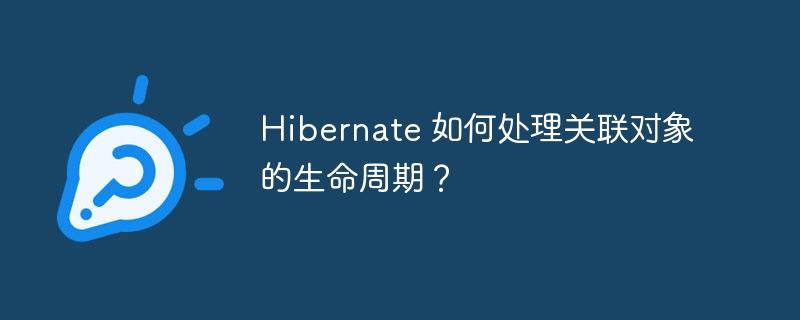
Hibernate uses different life cycle strategies to handle associated objects based on the association type. These strategies include one-way one-to-many cascading, two-way one-to-many bidirectional cascading, many-to-one orphan deletion, two-way one-to-one cascading, etc. In practical applications, you can choose an appropriate strategy according to your needs. For example, cascade deletion ensures that all associated child entities are deleted at the same time when the parent entity is deleted. In addition, Hibernate also provides rich mapping configuration options, such as orphanRemoval and mappedBy, to further customize the processing of associated objects.

Hibernate is a popular Java object-relational mapping (ORM) framework that can automatically map Java objects to a relational database table. When dealing with related objects, Hibernate uses different life cycle strategies based on different relationship types.
In Hibernate, common association types include:
Hibernate provides a variety of life cycle strategies to handle the life cycle of associated objects. Each policy has its own unique behavior, depending on the type of association and mapping configuration.
One-to-one-to-many
Two-way one-to-many
Many-to-One
NULL without automatically deleting the child entity. . NULL, and also automatically delete the child entity. . Two-way one-to-one
One-way one-to-many cascade deletion
@Entity
public class Parent {
@Id
private Long id;
@OneToMany(mappedBy = "parent", cascade = CascadeType.ALL)
private List<Child> children;
// ...
}
@Entity
public class Child {
@Id
private Long id;
@ManyToOne
private Parent parent;
// ...
}In this example, if we delete the parent entity, all Associated child entities will also be automatically deleted.
Bidirectional One-to-Many Bidirectional Cascade
@Entity
public class Parent {
@Id
private Long id;
@OneToMany(mappedBy = "parent")
private List<Child> children;
// ...
}
@Entity
public class Child {
@Id
private Long id;
@ManyToOne
@JoinColumn(name = "parent_id", nullable = false)
private Parent parent;
// ...
}In this example, if we update the parent entity or delete the child entity, the other end of the association will also be affected.
The above is the detailed content of How does Hibernate handle the life cycle of associated objects?. For more information, please follow other related articles on the PHP Chinese website!




